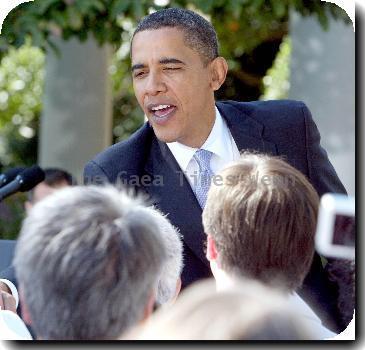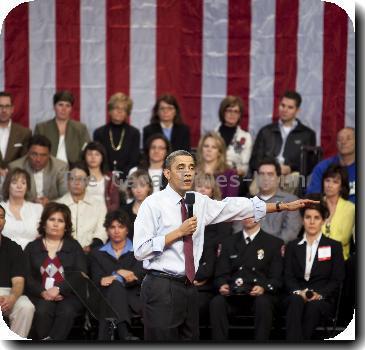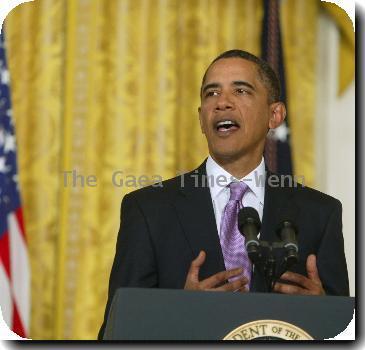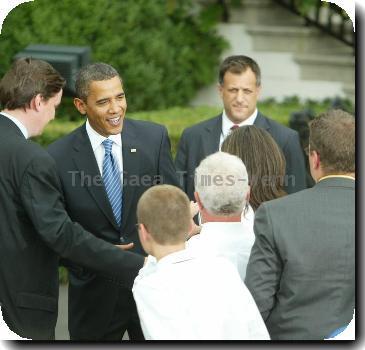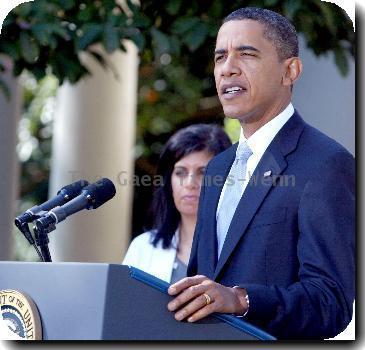Companies pointing fingers at each other as Senate begins hearings on the Gulf oil spill
By H. Josef Hebert, APTuesday, May 11, 2010
Senate hearings prompting spill blame game
WASHINGTON — BP PLC told Congress Tuesday its massive Gulf oil spill was caused by the failure of a key safety device made by another company.
In turn, that company said BP was in charge, and that a third company that poured concrete to plug the exploratory well didn’t do it right. The third company, which was plugging the well in anticipation of future production, says it was only following BP’s plan.
The blame game shot into the open Tuesday as the Senate began a hearing into the oil spill that has been contaminating water in the Gulf of Mexico for three weeks and threatens sensitive marshes and marine life from Louisiana to Florida.
Executives of the three companies, testifying before the Senate Energy and Natural Resources Committee, acknowledged investigators have yet to pinpoint definitively the cause of the well explosion April 20 or why the oil was not contained, but they spent little time before trying to shift responsibility for the environmental crisis to each other.
In opening the hearing, Sen. Jeff Bingaman, the committee’s chairman, said the failures that led to explosion and spill need to be closely examined so new safety measures can be imposed.
“I don’t believe it is enough to label this catastrophic failure an unpredictable and unforeseeable occurrence,” said Bingaman, D-N.M.
Sen. Lisa Murkowski of Alaska, the panel’s ranking Republican, said the future of domestic oil development in this country rests with finding out what went wrong, correcting the failures and shortcomings and assuring the public offshore drilling can be conducted safely.
Murkowski and several other senators made clear they didn’t like the finger pointing.
“I would suggest to all three of you that we are all in this together,” she told the executives, who were sitting shoulder to shoulder at the witness table, “because this incident will have impact on developing of our energy policy for this country.”
“I hear one message — don’t blame me,” said Sen. John Barrasso, R-Wyo. “Shifting the blame game doesn’t get us very far.”
The hearing, with a second one planned by another Senate committee later in the day, marked the first public questioning by members of Congress of executives of BP, which owned the exploratory well and was overall operator; Swiss-based Transocean Ltd., which owned the drilling rig and key well safety equipment, and Halliburton Inc., which worked on sealing the well for future oil production.
BP PLC focused on a critical safety device, the 450-ton blowout protector, that was supposed to shut off oil flow on the ocean floor in the event of a well blowout but “failed to operate.”
“That was to be the fail-safe in case of an accident,” Lamar McKay, chairman of BP America, pointedly noting that it did not own the rig and that “responsibility for the safety of drilling operations” belonged to Transocean.
Of the 126 people on the Deepwater Horizon rig when it was engulfed in flames, only seven were BP employees, he said.
But Transocean CEO Steven Newman emphasized BP’s role.
“Offshore oil and gas production projects begin and end with the operator, in this case BP,” said Newman. His said it was BP that prepared the drilling plan and BP that gave the go-ahead to fill the well pipe with sea water before a final cement cap was installed, reducing the downward pressure.
The executives said this was a practice that was being used frequently and that BP got approval from the federal Minerals Management Service.
Newman said there is “no reason to believe” its blowout protector didn’t work and that it might have been clogged by debris shooting up the well.
The explosion, believed likely to have originated from upward surging methane gas within the well, came three days after the drilling process was essentially completed, said Newman, pointing a figure at yet a third company, Halliburton Inc., which as a subcontractor was encasing the well pipe in cement before plugging it.
But Halliburton executive Tim Probert said they followed a process dictated by BP’s drilling plan and the company’s work was done “in accordance with the requirements” set out by BP and followed accepted industry practices.
BP and Transocean are conducting separate investigations into what went wrong.
Meanwhile, on the Gulf coast, crews replenished supplies, including fuel and water, preparing for the long haul in their struggle to stop the flow of oil. A supply boat, the Joe Griffin, that brought a 100-ton containment box to the site that ultimately didn’t work, pumped roughly 100,000 gallons of fuel into the tanks of a vessel that is drilling the relief well. It’s expected to take up to three months to complete such a well.
Daily activity sheets for the vessels in the containment area reviewed by The Associated Press were light on substantive plans for several of the boats surrounding the main leak on Tuesday. Several were standing by for further instructions.
Associated Press writers Matthew Daly and Frederic J. Frommer in Washington, and Harry R. Weber from the site of the oil leak on the Gulf of Mexico, contributed to this report.
Tags: Accidents, Alabama, Barack Obama, Energy, Environmental Concerns, Government Regulations, Industry Regulation, Legislature Hearings, Mobile, North America, Oil spill, Search And Rescue Efforts, United States, Washington
